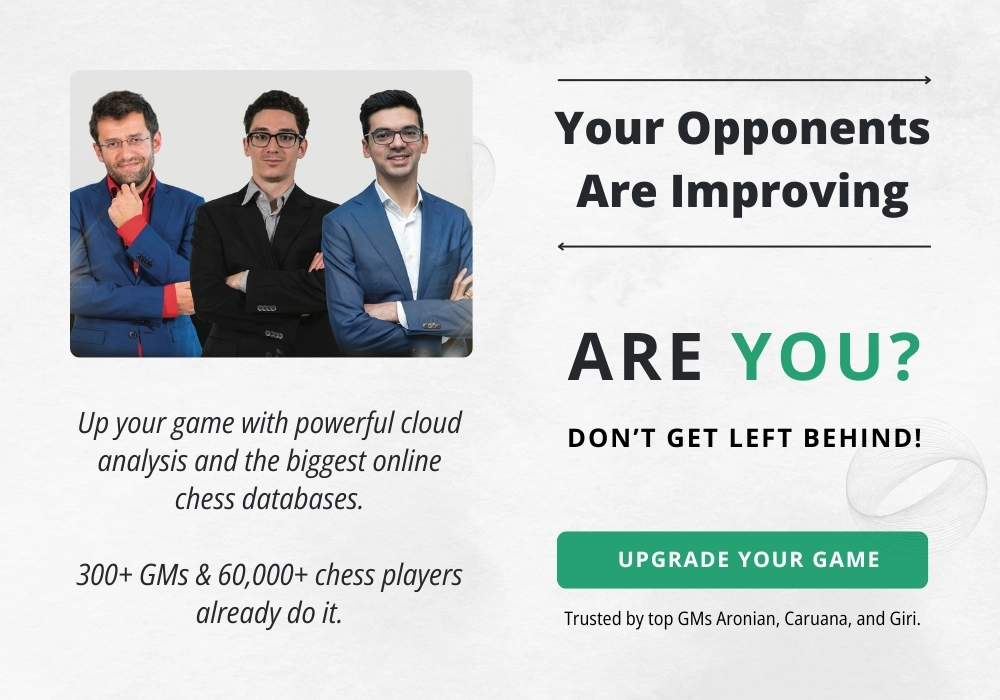
Inside the Mind of a Chess Grandmaster: Chess Marathon with Chessify - by GM Zaven
Story and game analysis by GM Zaven Andriasyan
After a long break from tournament chess, I decided to try a chess marathon in the US. In just 20 days, I competed in 4 tournaments, playing a total of 36 games. To my delight, I secured prizes in every tournament and even became a champion in one. What surprised me the most was my success in the opening phase – a segment I presumed challenging since I haven't played much in recent years. Given this, I've chosen to share insights from my four tournaments and discuss my most interesting games, while walking you through both my pre-game preparation and my thought process during the games.
In the US, tournaments are a bit different. You play two rounds every day. Moreover, the pairings come out merely 15-30 minutes before the game, which doesn't give much time to prepare for a specific opponent. To be fair, I was aware of this peculiarity, so I reviewed and updated my opening repertoire prior to the tournaments to refresh my memory of various lines and underlying strategies.
Now, let me guide you through the course of my first event and the nuances of one of the games.
1. 1000GM Vegas Super Swiss and Game 4
The beginning of this tournament was a challenge. After my long break, I wasn't accustomed to the intense atmosphere, which made me get tired during the games. Yet, post the initial 3 rounds, I found my footing. In fact, I was on track for the top positions before the final round, but a loss set me back. Still, the highlight of my performance was during rounds 4 through 7. My round 4 game, in particular, was very entertaining, so let's go through it now.
Following my beloved Italian opening – which brought me 5/6 points in this marathon – I found myself in a complex position playing White. With a looming threat of g4 from Black which would lead to a strong attack on my king, I had to be proactive. I had the advantage of the bishop pair, but to capitalize on it, I needed to open up more diagonals and activate my pieces. What would you play here?
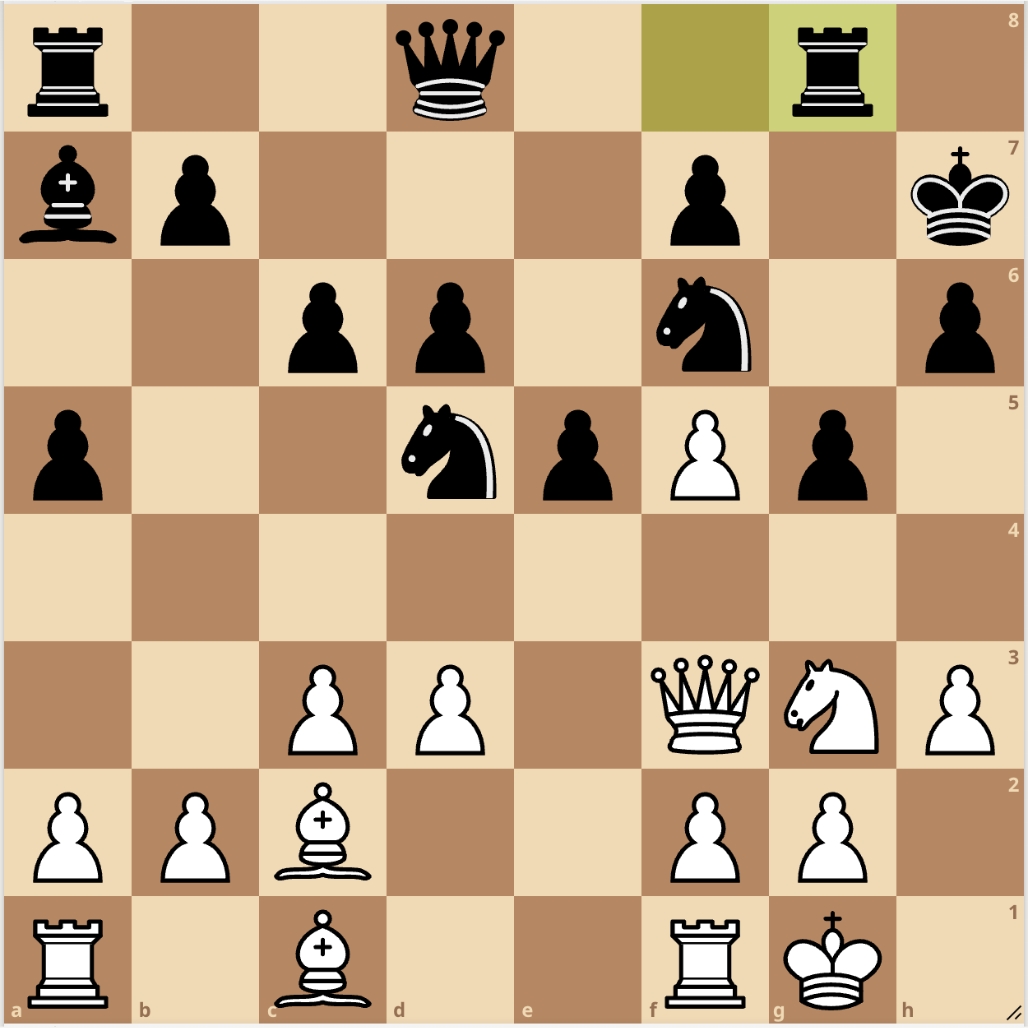
I opted for 18. d4, aiming for Bd2 if Black captured. In case my opponent responded with g4, I'd take the pawn and play f6 with a check. Such a position would be very dangerous for the black king. While computer engines might handle it, for a human player it is too much of a challenge. Recognizing the danger, my opponent chose Nb6.
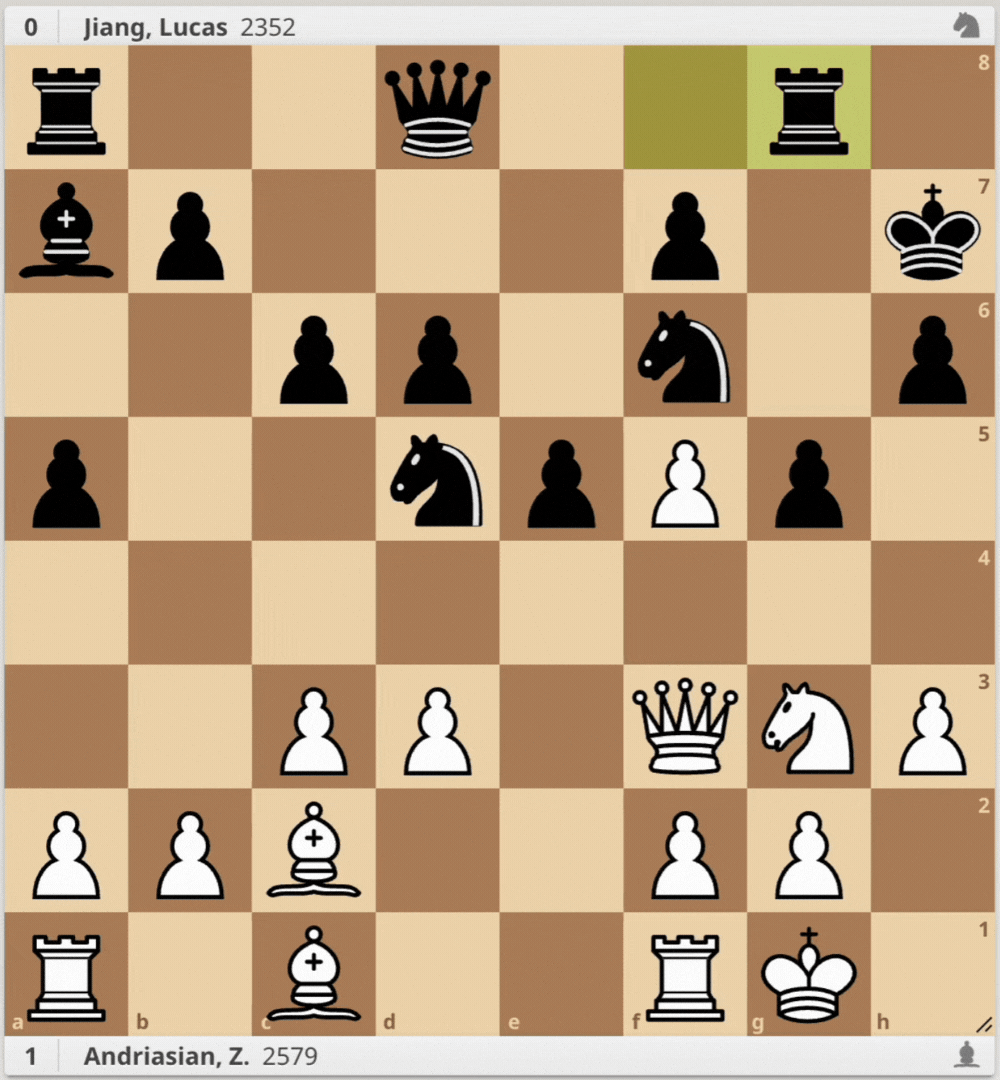
Despite giving up a pawn, I improved my position allowing my bishops to dominate the diagonals toward the black king. My opponent was defending valiantly, but the constant pressure made him commit a fatal mistake eventually. After playing 34…gxf3, Black resigned without waiting for a response, as White has an immediate win. So take your time to find the winning sequence.
See the solution
Re5 followed by Qg6 leading to checkmate.
2. National Open 2023
With no rest day in between, I entered my second tournament right away. Having 5.5 out of 6 points, I suffered a loss in the seventh round with black pieces and immediately received the black pieces again, this time against a young American GM Andrew Hong. A victory was necessary to keep my winning aspirations alive.
Andrew made an aggressive statement, sacrificing a piece on his 16th move. Yet, I think he overlooked my counterplay. Can you find my response?

I stroke back with a counter-sacrifice, giving up my queen. My opponent likely misjudged the resulting position wherein I secured three pieces against his queen - a decent balance that offered favorable chances to me.
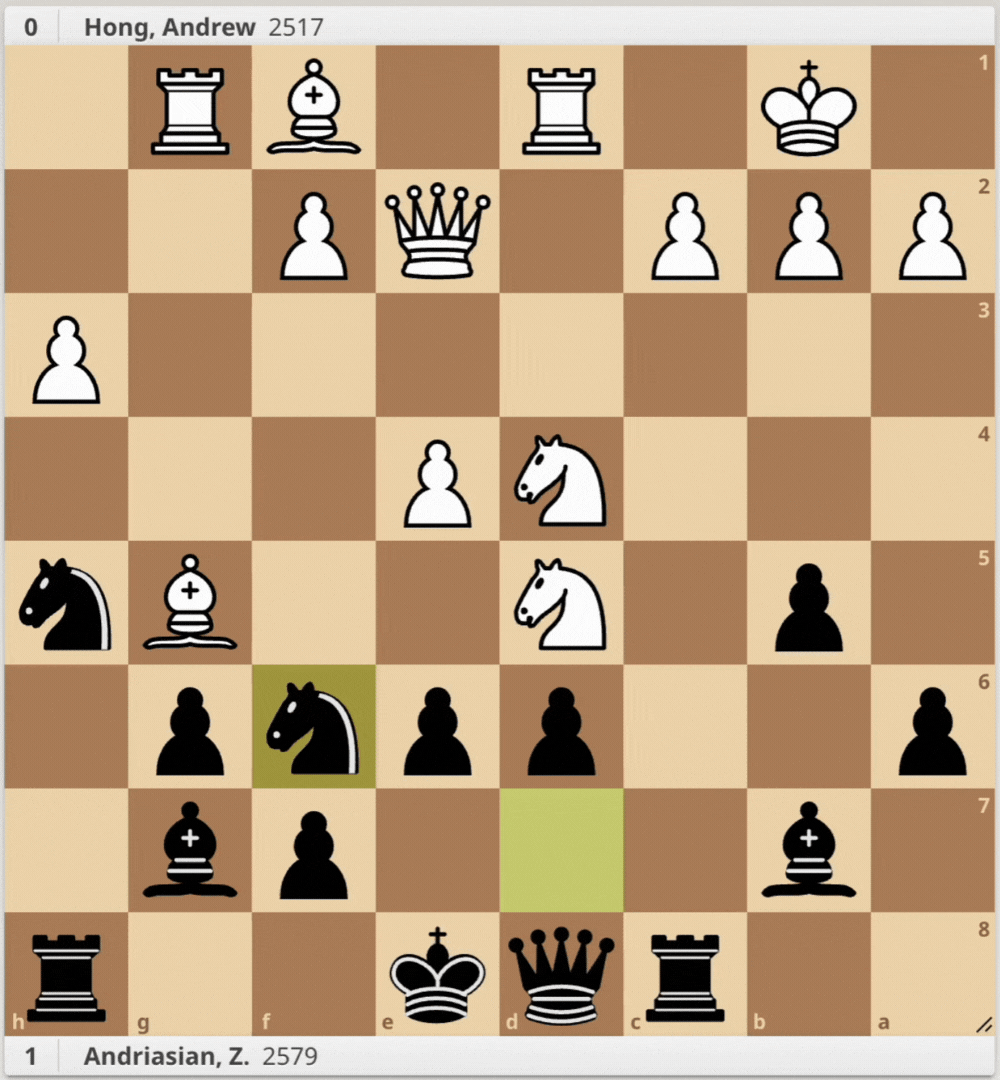
The game flew easily for me. With all of my pieces active and my king safely on f7, the initiative was on my side. White's position was deteriorating steadily and after 29...Rh4, Andrew also had to part with his rook. Soon after, he also gave up the second rook for one of my knights, leaving me with not only a positional but also a material advantage.
As our game reached its climax, I pose this challenge for you. Your move now. How would you deliver checkmate in two with black? Black to mate in 2.
See the solution
Rf1 followed by Rd1 checkmate.
3. 16th Philadelphia International
After three days of rest, which I mostly spent traveling from Las Vegas to Philadelphia, I began my third and best tournament. The start was shaky; the first round felt like a disaster, but I somehow managed to hold a draw. In spite of some nerve-wracking games, I remained undefeated throughout the tournament winning five and drawing four games to tie for first place and get the top prize thanks to better tie breaks.
I want to share two key games from this tournament, starting with my win in the 6th round. It was the second game of the day and I had only 20 minutes to prepare. Yet I needed to win against a strong international master Sam Schmakel, who was half a point ahead and on a roll, having taken down several top seeds.
Game 1
When I was studying Sam's games, I noticed that he had a consistent approach to the French defense. I knew that the line he was constantly playing was somewhat controversial and required precise play from his side. So I quickly cross-checked it using Chessify's cloud engines. In cases like this when I have almost no time for deep preparation, I use Chessify's 1BN/s Stockfish as it is the only way to get trustworthy analysis in little time.
To my advantage, we played the very opening line that I had prepped for. I believe that to truly hold up against me in this position, Sam would've needed thorough analysis with strong engines as well. Luckily, it seemed he hadn't done so.
Let's dive in from the 25th move. Until this point, we were following a theory that both of us were familiar with. When we reached this position, I knew that I should move my king to the "h" file and position my rook on g1 to back up a potential g4 push.
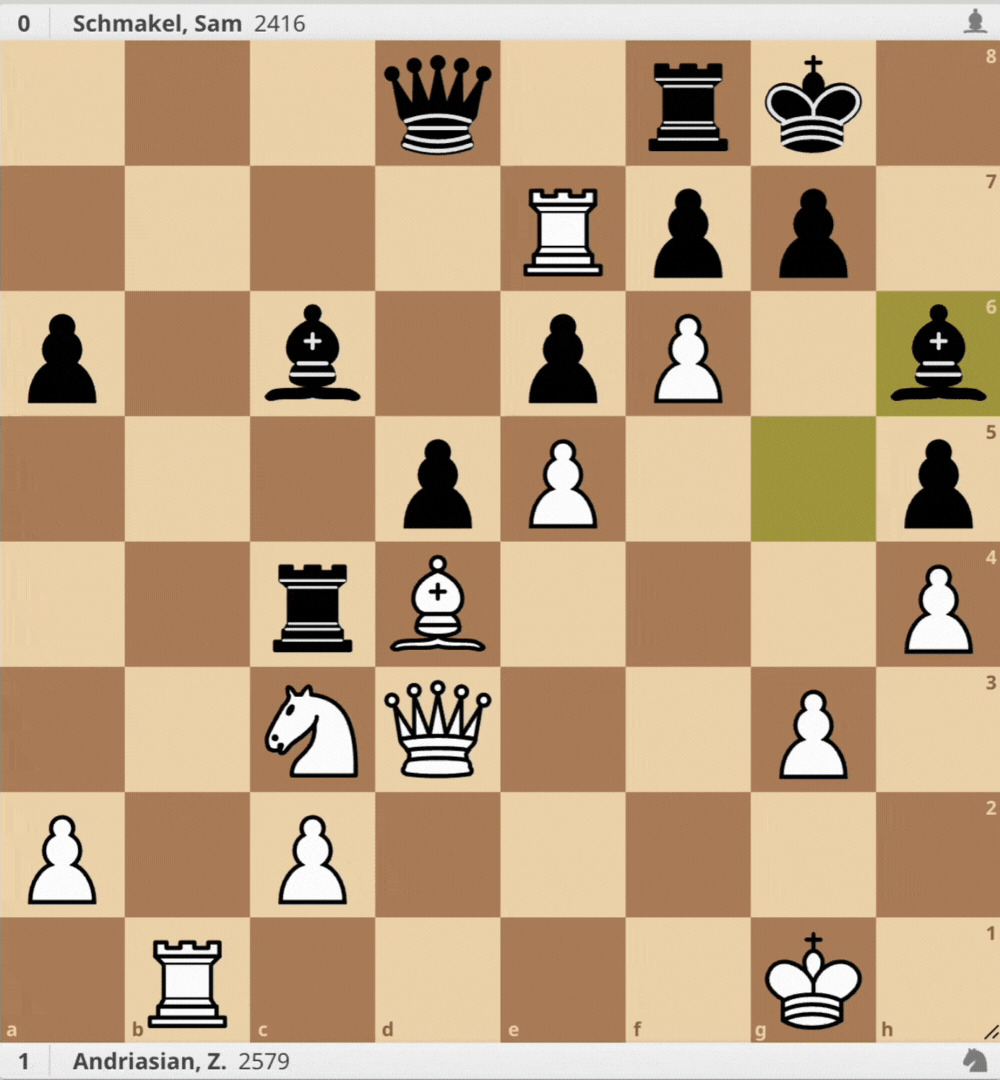
To Sam's credit, he did find the correct Qc8 Qb8 sequence, but it drained his clock. Without thorough engine analysis, he slipped with Rc8. My prep paid off; soon I was an exchange up, and the rest was a matter of technique.
Game 2
The second highlight is my game with Hans Niemann in the final round. He was leading, with five of us trailing by just half a point. Having drawn against him in the first event, I was keen for a win with white pieces.
I had two potential paths in my prep: a Sicilian or an Italian game. Hans chose a line in the Sicilian that led to a sharp game - perfect for me as it gave good chances of winning with white. By the 14th move, I had to make a critical decision: keep the position calmer with b3 or go for more aggressive continuations by focusing my play on the kingside. I chose the second option based on the tournament situation.

My plan was to bring the rook to the center and then play Qc1 with the idea to exchange a pair of bishops by Bh6 and weaken the black king to start an attack. Hans, on the other hand, started an attack on the queen side and accepted my invitation to a complex battle. In the position below, his last move was Rfb8 attacking the b2 pawn. You may try to find my response here on your own before reading on.
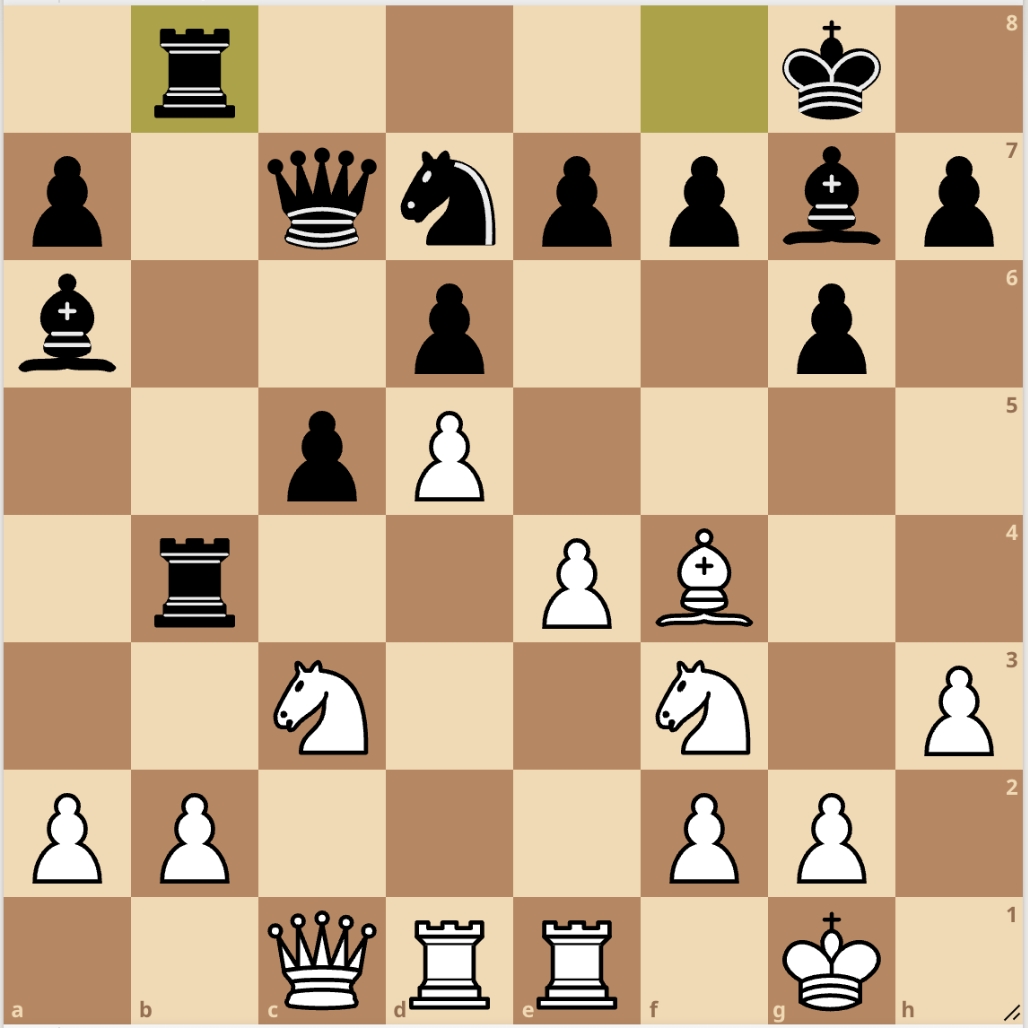
I still could've opted for a quieter b3, but the aggressive e5 seemed fitting. Hans spent a lot of time, leaving only 4 minutes on his clock, too little time considering both the tactical nature of our position and the delay clock system without increments.
The practical continuation would've been to take on f4. After 17…Rf4 18. Qf4 Be5, I had two options: Qc1 or give the exchange back with Re5. I didn't make up my mind on this matter yet. Hans decided to take my b2 pawn instead and after exchanging the pawns on d6, I missed a nice tactic that would allow me to penetrate Black's position immediately. I invite you to find it now.
Solution | White to move.
19. Re7 if Bf6 20. Rde1 Be7 21. Re7 and Ng5 is coming shortly - a beautiful variation that I missed, unfortunately.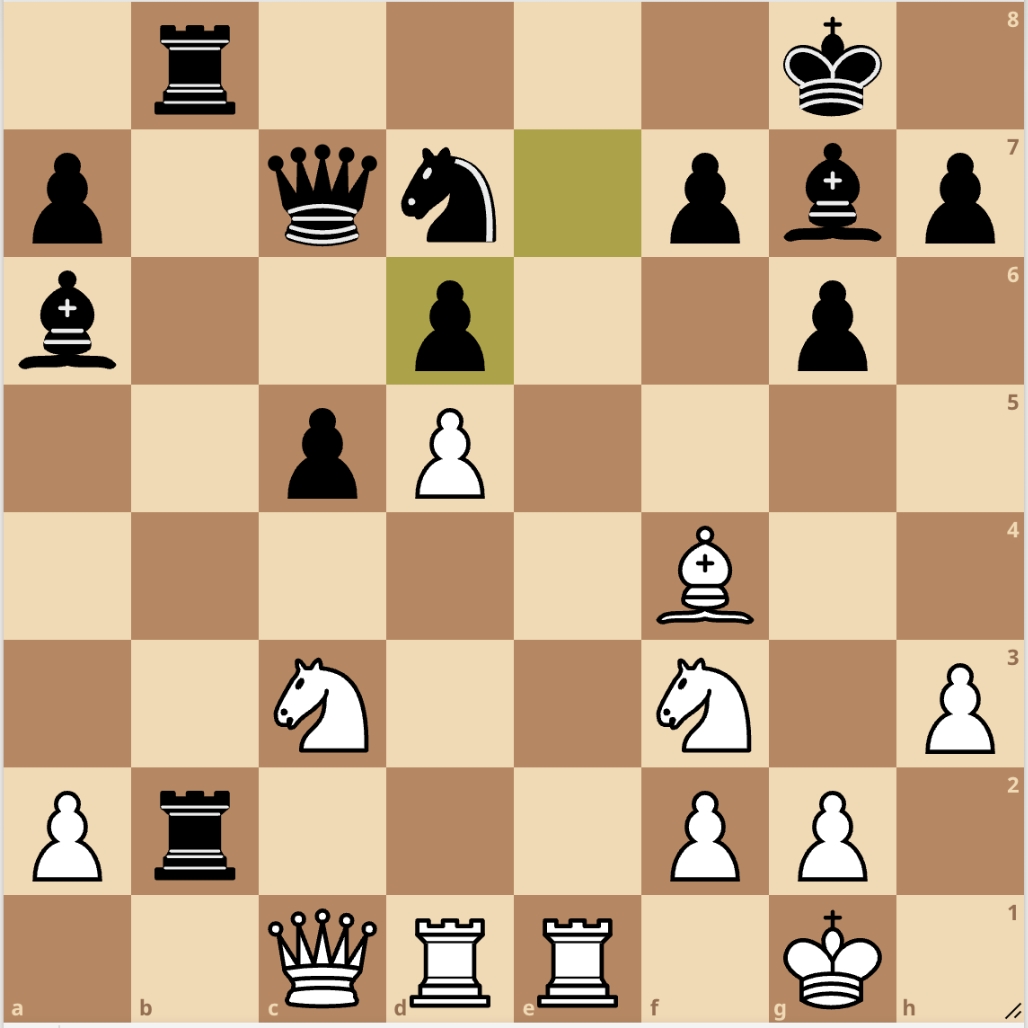
Instead of the better move Re7, I went for my initial plan to exchange the black-squared bishops. Hans had too little time and a difficult position to hold, so the pressure bore down on him. By 23. Re3, I was setting up threats around Nf5 and preparing to double my rooks on the e-file. Ultimately, Hans faltered.

Hans made a fatal mistake with Ne4. Now, it's your turn to find the mate in 7.
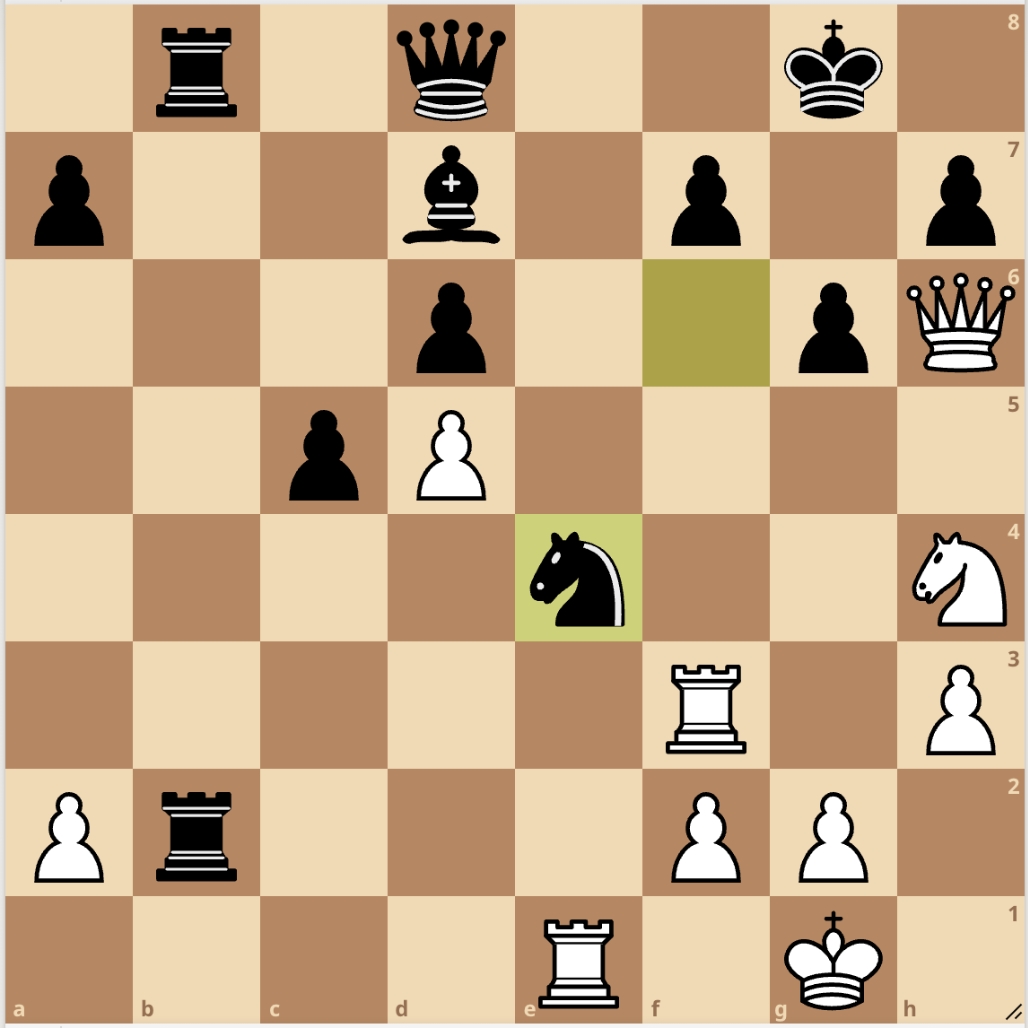
In case you want to watch the full game, I'm embedding it below.
4. 51st Annual World Open
Riding the high from my last victory, I jumped into the next event. However, an early oversight saw me plummet from a dominating position to a heart-wrenching defeat. Fired up, I bounced back with a 5-game winning streak, landing back at the top. From this fiery comeback, one game stood out the most.
Round 5 was against another French defense player. My opponent had lots of games where he played a pretty dubious line. Again, I fired up Chessify's 1 BN/s Stockfish and, in 10 minutes, got a solid game plan. He stayed true to his opening, leading to a crucial juncture where a wrong step could cost him dearly.
I had this position on board during the pre-game preparation. In his previous two games, my opponent played both 13…Nxf4 and 13…bxc6. He went for the latter against me. I retreated with 14. Qg3 and was expecting him to play a5, the move that was both the best in the position and also was his choice in his previous game. However, he chose a different move, h4, possibly realizing that I have analyzed his previous game.
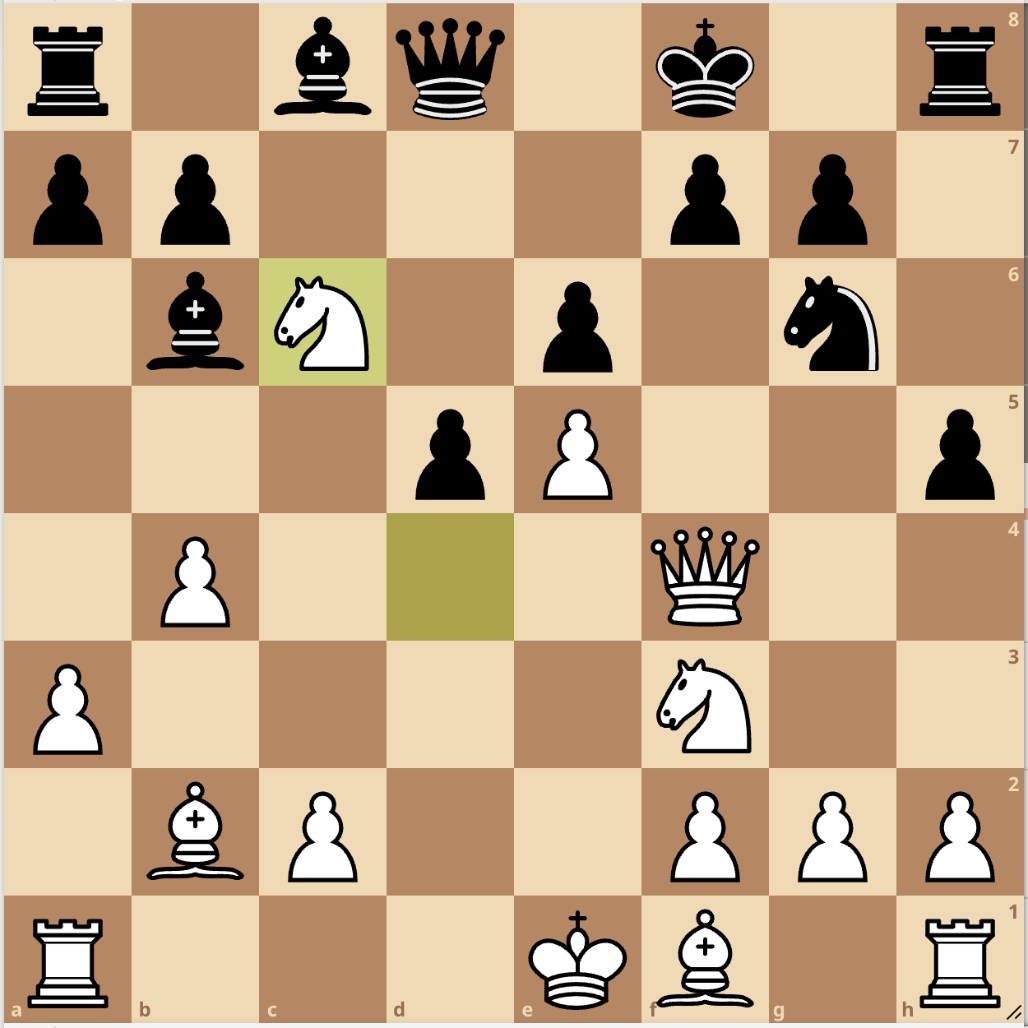
I didn't analyze 14…h4 specifically but I knew it had to be worse than 14…a5 - a move that led to White's advantage despite being engine's first choice. After some exchanges, we reached a position with several tactical nuances. While it was tempting to solidify my position with Bc5 followed by b4, I wanted a dynamic game. Hence, I went for a rather unusual 24th move: 0-0. My move led to several exchanges and intriguing tactical complications.

I'm offering this position as a puzzle. You may view the full game to check your solution. White to move and win.
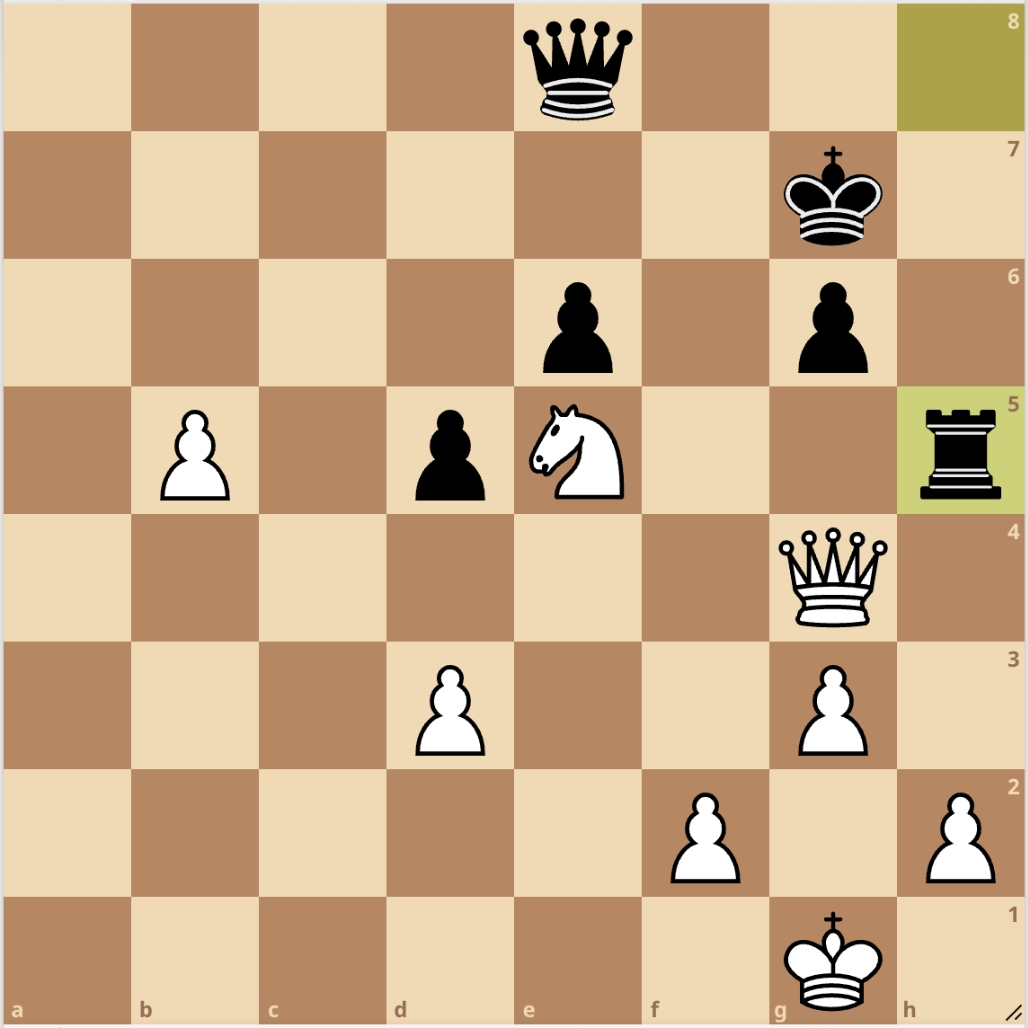
I hope my journey through these tournaments conveys the depth and dynamism of chess. Each game we play, each decision made over the board, should carry layers of strategy and reflection. By sharing my insights from these events, I aspire not just to offer a window into high-level play, but also to inspire you to critically assess your own games, trying to improve with each of them. The road to mastery is long and winding, but every game, win or lose, is a lesson. If you're committed to advancing and find my analysis beneficial, take a look at my previous blogs with Chessify as well: 'Top 3 "Superbet Chess Classic" Games Annotated by a Grandmaster' and '7 Exclusive Grandmaster Tips on How to Find Chess Opening Novelties'. Best of luck, and may we meet across the board someday.



